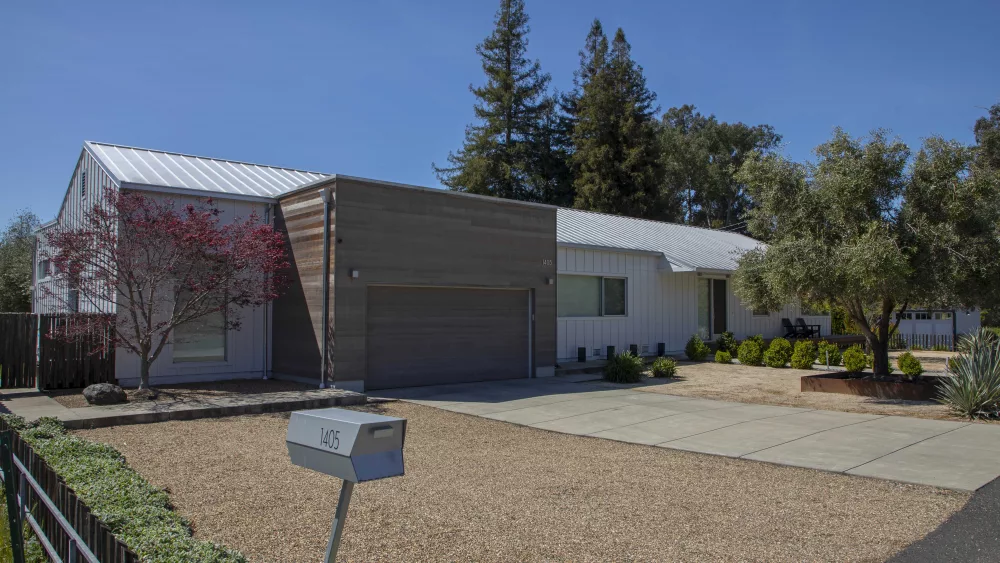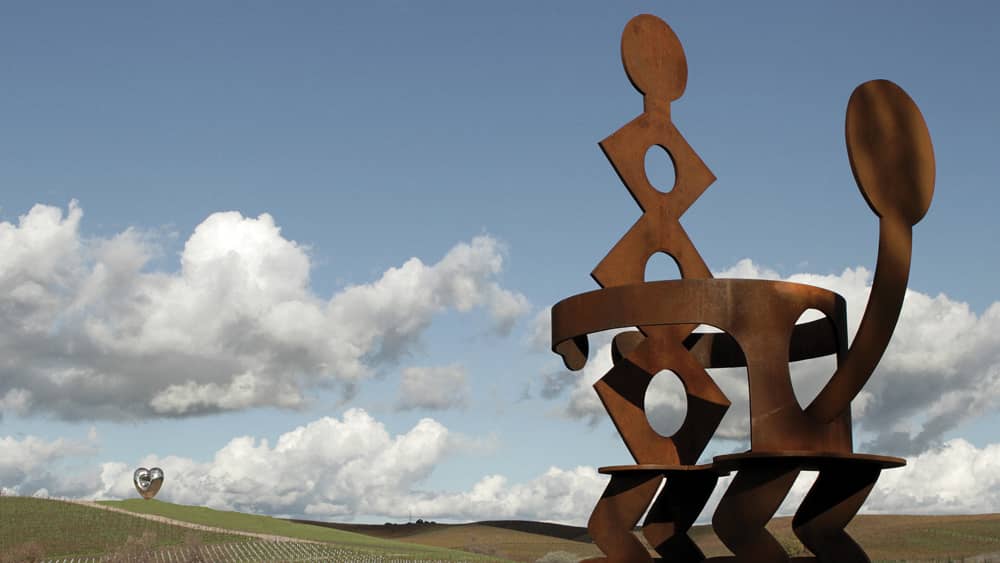
There are more than 800 wineries in Sonoma and Napa counties. Small family-run businesses and international conglomerates compete to carve out a niche in the crowded field. Scattered throughout the countryside, wineries can be found in farmhouses, caves, castles and faux French chateaus. Others incorporate contemporary architecture with breathtaking views of the hills and vineyards. Some offer gourmet food pairings with a wine tasting experience. Others cater to families with bocce ball courts and picnic tables. Those with limited production take pride in their exclusivity.
A few have curated art collections reflective of their owner’s passion. Following a tasting, visitors can wander through a sculpture garden with towering works by world-famous artists. Or, they can stroll through a gallery and view art. Some of those images adorn a bottle’s label, mirroring characteristics of the winemakers’ art within. Following are a few wineries where art and fine wine have become an integral part of the brand and the visitor experience.
The Donum Estate
Expectations of a unique art-and-wine experience are set right at the beginning. Driving into the estate, visitors are greeted by a three-story high sculpture, the elongated head of a young woman, her eyes closed as if in meditation. The stark white, massive piece titled “Sanna” is by Barcelona artist Jaume Plensa. On the wall in the Donum House, the tasting room is a large painting of seven young men in a boat, floating on a lake of neon green. None of the boys are smiling. In the background, a panicked flock of seven white herons flaps away. In the thought-provoking work “Into Taihu” by Chinese artist Liu Xiaodong, the birds symbolize a longing for freedom and a need to escape an environmental disaster.
There are over 50 monumental large-scale sculptures on the 200-acre property. More than 40% are site-specific commissions. The works, from four continents, reflect the tastes of estate owners Allan and Mei Warburg. “We are thrilled to keep expanding The Donum Estate collection,” says the Warburgs. “Each of our new works will interact beautifully with the surrounding landscape and enhance the experience of all who come to enjoy the unique fusion of fine wine and monumental works of art.”
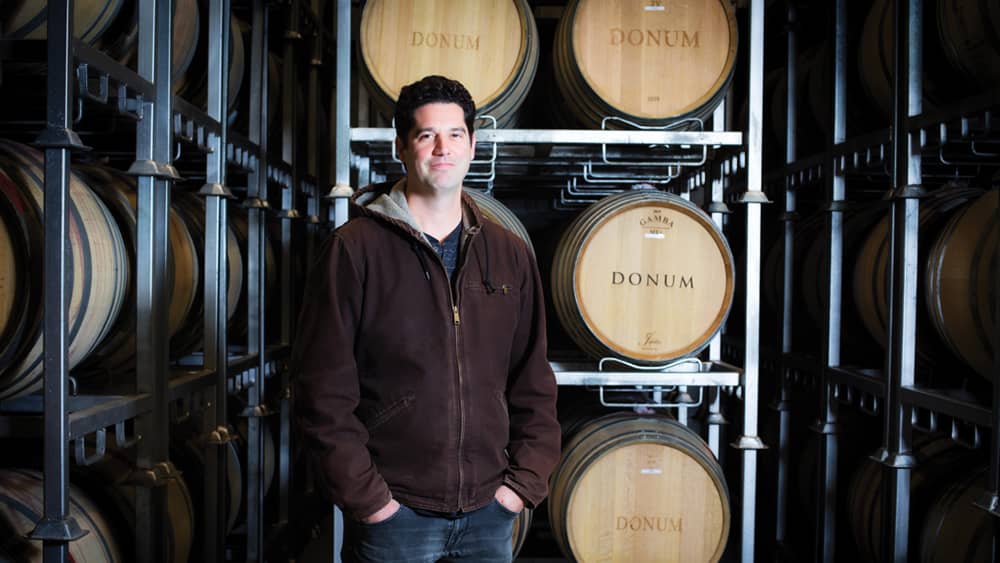
A sculpture titled “Soma” occupies a place near the vineyards. It’s by artist Subodh Gupta. The oversized Pinot Noir bottle adorned with grapes is made from stainless steel replicas of kitchen utensils utilized by workers in India. The dishes, pots and pans, milking buckets and pails are Gupta trademark materials. The word Soma comes from Vedic ambrosia. The drink, favored by the gods, provides energy and immortality.
Most Donum sculptures are located outdoors, with the exception—“Crouching Spider.” Made of steel, the piece requires protection from the elements. It’s housed in a building specially designed to accommodate the massive piece. The work is by French-American artist Louise Bourgeois. She says that her mother inspired her iconic spider sculptures. “She was deliberate, clever, patient, soothing, reasonable, dependable, subtle, intelligent and neat—just like a spider.”
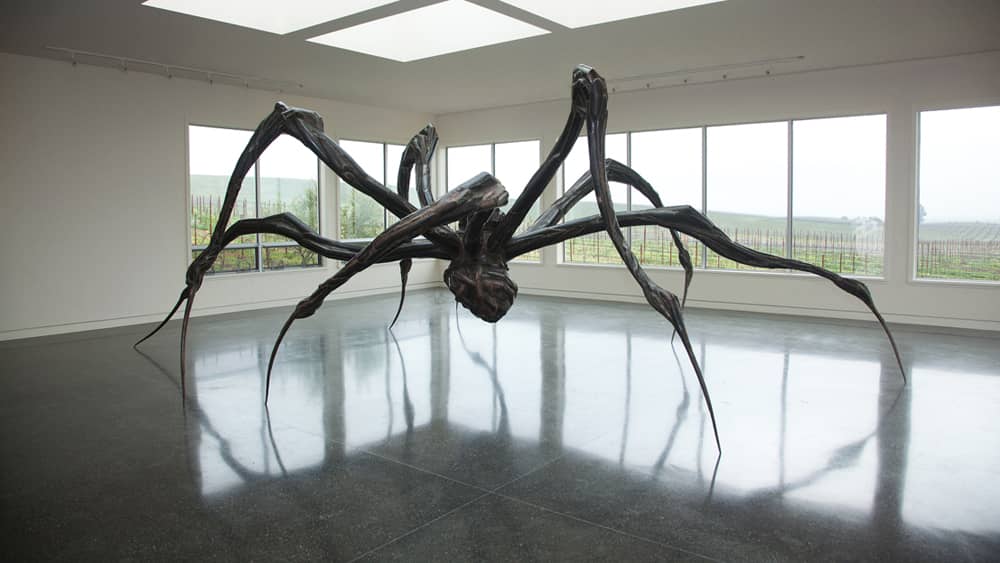
Donum is the Latin word for “gift of the land.” That is evident in Winemaker Dan Fishman’s style of winemaking. Fishman, vice president of winemaking and vineyards, graduated from Cornell University. He interned at Donum and also spent several years honing his skills with wineries in Sonoma and New Zealand prior to being appointed to take over as Donum’s head winemaker. “We believe in letting nature do its thing,” he says. Carneros is an area of rolling hills, with heavy clay soil and high winds. “It never gets extremely hot here. It’s perfect for our Pinot Noir and Chardonnay varietals.”
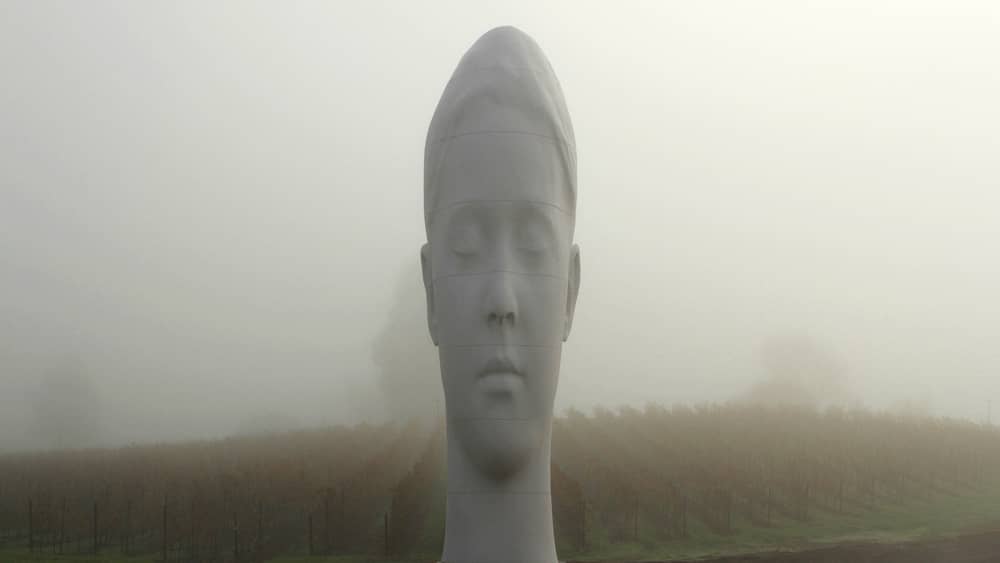
Imagery
The esteemed Benziger name has become synonymous with award-winning wines. “Eighteen members of my family have been involved in the wine business,” says Imagery Winemaker Jamie Benziger. Her father, Joe, started Imagery more than 35 years ago on 20 acres, the former site of a Glen Ellen ostrich farm. Now there are vineyards for Cabernet Sauvignon and Malbec, a winery and an art gallery. In addition to well-known varietals, Joe incorporated lesser-known Italian, Spanish and French grapes such as Lagrein, Malbec, Primitivo and Tannat (the national grape of Uruguay) into his winemaking. As a result, there’s an extensive portfolio of unique wines on offer.

When Joe retired in 2017, Jamie continued that tradition along with ideas of her own. “My transition to winemaker wasn’t a given,” she says. “I had to earn the privilege.”
Before joining Imagery, Jamie interned at Gundlach Bundschu, St. Francis and Bogle, worked the harvest in New Zealand and completed wine studies at Sonoma State University. Her first wine added to the Imagery portfolio, a Tempranillo Rosé, sold out in two months. “I enjoy crafting new wines, adding a twist, and creating something a little different from the expected.”
A downsized replica of the Parthenon, its origin unknown, stands on the Glen Ellen property purchased by the Benziger family many years ago. That image was incorporated into the first Imagery label. Now artists compete for the opportunity to have their art displayed on the labels of the 30 vintages Imagery produces each year. Thirty-five artists are commissioned and another 200 submit unsolicited. The main criterion is that the work must include the Parthenon in some form. A team including the winemaker and the curator selects works that best reflect the characteristics of a particular wine. The art selected is displayed on labels and in the winery’s art gallery.
Kara Lynae de Lambert, Imagery curator, travels to major cities throughout the U.S. viewing works in galleries and meeting with new artists. “Contributing artists come from all over the world and represent a broad cross-section of styles, techniques and acclaim,” she says. The artists receive an honorarium and five cases of the wine with their label. “Art lovers visit Imagery for the art, then discover the wine—and vice versa. Some say they hesitate in opening the bottle, afraid they’ll lose the artwork,” de Lambert says with a smile. “Others drink the wine, lift the label and save it.”
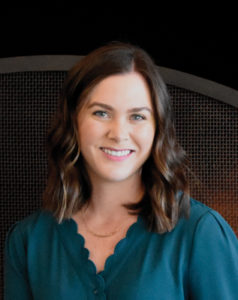
One of Imagery’s artists, Elysia Myers, used Rosé, Petit Sirah and Merlot wines to paint “Cork Petals.” The art adorns Imagery’s Wow red blend scheduled for release in 2023. The 2020 White Burgundy, a Chardonnay, Pinot Meunier and a Pinot Blanc blend, has green apple and tropical notes, bright acidity and rich complexity. Those characteristics are evident in the watercolor by Karl Pilato displayed on the label. New Orleans artist Anastasia Pelias’ oil painting “Blue Not Blue” is on Code Blue’s wine label. Co-fermented with Sonoma’s Serres Ranch blueberries and Syrah, the wine is a nod to good health and is a tasting room favorite.
When The Wine Group purchased the Benziger Family Winery and Imagery in 2015, the family wanted to keep its extensive collection of 600-plus works by more than 400 artists intact. They donated 442 pieces to Sonoma State University, tripling the size of the school’s art collection. The works donated include notable American contemporary artists such as Robert Arneson, William Wiley, Hing Liu, Nathan Oliviera, Robert Hudson, Squeak Carnwath and others.
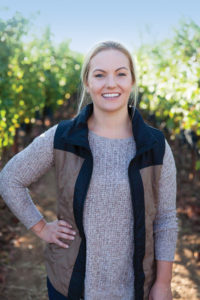
Imagery, with 6,000 club members, produces approximately 15,000 cases a year. All wine is made from grapes that are sustainably grown and organic or biodynamic. During the winter months, visitors gather inside around a roaring fire. On sunny days, tastings are outdoors with vineyard views and an expansive lawn with bocce balls and picnic tables. “We bring out-of-town guests to Imagery,” say Emma M. and Scott D. of San Francisco and Sonoma. “The setting is relaxing, there’s a wonderful art and many different wines. Our current favorite is Tannat.”
Paradise Ridge Winery
It all began in 1961 when Walter Byck proposed to Marijke (pronounced Mariah-kay) Hoenselaars in the Netherlands, in the Kröller-Müller Museum sculpture garden. When the couple married, they purchased 155-acres in Santa Rosa and founded Paradise Ridge Winery, it seemed only natural that a four-acre grove would be reserved for sculpture. In 2006, Marijke was killed in an automobile accident. The sculpture site, Marijke’s Grove, is named in her honor.

From the initial four-acre sculpture grove, there are now 30 sculptures scattered throughout the property, seven with ties to Burning Man. One of those pieces, a 44-foot tall, 9-ton, rusted steel sculpture of a woman stands in a quiet meadow. Her arms are raised to the sky, and with her head tilted back, her long braids hang. “Eileen” was displayed at Burning Man in 2006 and 2007. The work is by San Francisco artist Karen Cusolito.

David Best’s “Temple of Remembrance” is another piece looming over the property. The domed, open-air, intricate sculpture blends Celtic, Hindu and European Gothic images. Visitors have tied strips of cloth with heartfelt sentiments and the names of lost loved ones on the temple. “The temple has become a quiet community gathering place,” says Rene Byck, Walter’s son and winery co-owner. “The remembrances will be removed and burned at the next Burning Man.”
“Empyrean,” a massive wooden sculpture perched on a bluff overlooks the surrounding countryside. The piece, destined to be part of the main temple at Burning Man 2020, is by artists Renzo Verbeck and Sylvia Lisse. When the event was canceled due to the pandemic, the sculpture found a temporary home at Paradise Ridge. “Construction required four months and thousands of volunteer hours,” says Verbeck. During the day, the sun cast shadows of the sculpture’s mosaic pattern across the ground. At night the large piece is illuminated and can be seen for miles.
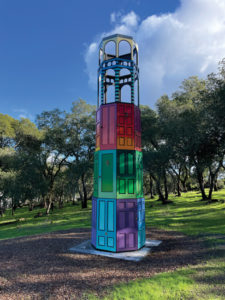
“Following the Tubbs fire, the property has been restored with an emphasis on our core values—sustainability and biodiversity,” says Byck. Restoration included the installation of an irrigation system pinpointing drought areas and saving hundreds of thousands of gallons a year; the introduction of sheep for natural weed management; and planting cover crops between rows in the vineyards. Girl Scouts have brought in native plant species for pollinators, and falcon kite silhouettes are flown to mitigate bird damage as grapes ripen.
Fifteen acres of the 155-acre property are vineyards planted with Pinot Noir, Chardonnay and Sauvignon Blanc varietals. Winery production is approximately 3,800 cases a year. The signature wine, a Cabernet Sauvignon, is sourced from grapes grown in the Rockpile appellation, an AVA known for its red varietals. After 23 years as the Paradise Ridge winemaker, Dan Barwick has retired. “Our new winemaking team looks forward to continuing Dan’s legacy of fine winemaking and respect for the variety of soils, exposures and microclimates found on our historic estate,” says Byck.
Burning Man followers come to Paradise Ridge for the art and discover the wine. For others, it’s the opposite. “We checked out several area wineries,” says Lucy R. and Kevin M. of San Francisco. “We chose Paradise Ridge for the wine and the spectacular view. What a pleasant surprise to discover sculpture!”
“One doesn’t have to drink wine to come here,” says Byck. “Visitors can wander the grounds and be inspired by the art.”
Viewing art and drinking fine wine are sensory experiences. Pairing the two makes that experience special. Whether making wine, creating sculptures, or paintings, there’s the need for passion, attention to detail, a blending of materials for color and complexity. The ultimate goal of the artist and the artisan is to create something special to be enjoyed by many.
Great Wine and Even Better Art
Experience lavish wine and art pairings at the following wineries below
Donum Estate
Wine and art experiences for up to six persons can be arranged by reservation. Depending on visitor preference, these can include a wine tasting with a small bites pairing, a walking tour, or more extensive exploration of the property in an all-terrain vehicle. Larger groups can be accommodated by special arrangements. For more information, visit thedonumestate.com.
Imagery
On Gallery Day, events artists come for a meet and greet and to showcase their current work. Reservations are required for tastings for a group of 9 or more. For more information, visit imagerywinery.com.
Paradise Ridge
Seated tastings with valley views are held daily at 11 a.m., 1 p.m. and 3 p.m. Reservations are required. For more information, visit prwinery.com.




